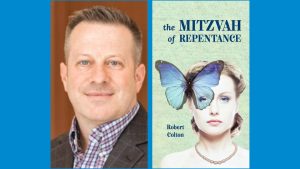Haftarah offers new dimensions to understanding weekly parsha
Published July 20, 2011
My Shabbat morning Torah study has become a highlight of my week at Temple Emanuel. We meet for study and discussion of the weekly Torah portion, but the fun of our learning lies in the loose, freewheeling nature of our discussions.
This year, we have learned not only the weekly Torah portion (parashah) but also the prophetic reading associated with it (haftarah) from the second major section of the Jewish Bible after the Torah ((Nevi’im). While haftarah is often overlooked, we have found that these passages contain incredible stories. Often they contain the kind of chunks of wisdom that get exposed in the collision between the strict, abstract laws of the Torah and the messy, intractable situations of real life. Sometimes they even seem to include wry comments on their better-known counterparts from the Five Books of Moses.
This week’s Torah portion is Matot (Numbers 30:2-32:42); its haftarah is Jeremiah 1:1-2:3. This passage is the 1st of three haftarot of admonition (t’lat d’fura-nuta) read annually from the 17th of Tammuz to 9th of Av on the Jewish calendar – representing the three weeks from the breaching of Jerusalem’s walls by the Babylonian Empire in 586 B.C.E. through the destruction of Jerusalem and the First Temple, three weeks later.
ADVERTISEMENT
We read the Biblical Book of Lamentations (Eichah) on the 9th of Av (it starts the evening of Monday, August 8 this year). Lamentations tells the horrific story of Jerusalem’s destruction. Its authorship is likewise ascribed to the Prophet Jeremiah.
Following the 9th of Av, we will read seven haftarot of consolation, one each week from the 9th of Av until Rosh Hashanah. So a profound shift in the haftarot begins now – from connections to the content and themes of the weekly Torah portion to connection to the content and themes of the Jewish calendar. Yet if we look we will find connections to the weekly portion, too.
Numbers 32 tells how the tribes of Reuben and Gad strike a bargain with Moses: that they be allowed to settle the land of Gilead in the Transjordan in exchange for serving as “shock-troops” in the impending Israelite invasion and conquest of the land of Israel. So – the stories of our Torah portion and our haftarah are mirror images! One tells how Israelites triumphed in conquest of the Promised Land; while the other tells how foreign invaders invaded and conquered Jerusalem, some 900 years later.
ADVERTISEMENT
The Hellenistic Jewish philosopher Philo of Alexandria once said, “Be kind, for everyone you meet is fighting a great battle.” What battles are you fighting, poised to begin, or recovering from? Have you chosen your battles carefully? Have you, or will you help others fight for something that isn’t only for yourself?
This comes with blessings for preparing for the New Year – may it be one of peace and reconciliation, gentle resolution and kindness. If there must be battles, May they be few, carefully chosen, and with as little collateral damage as possible.
D’var Torah – Matot
Rabbi Justin Kerber serves Temple Emanuel and is a member of the St. Louis Rabbinical Association.
















